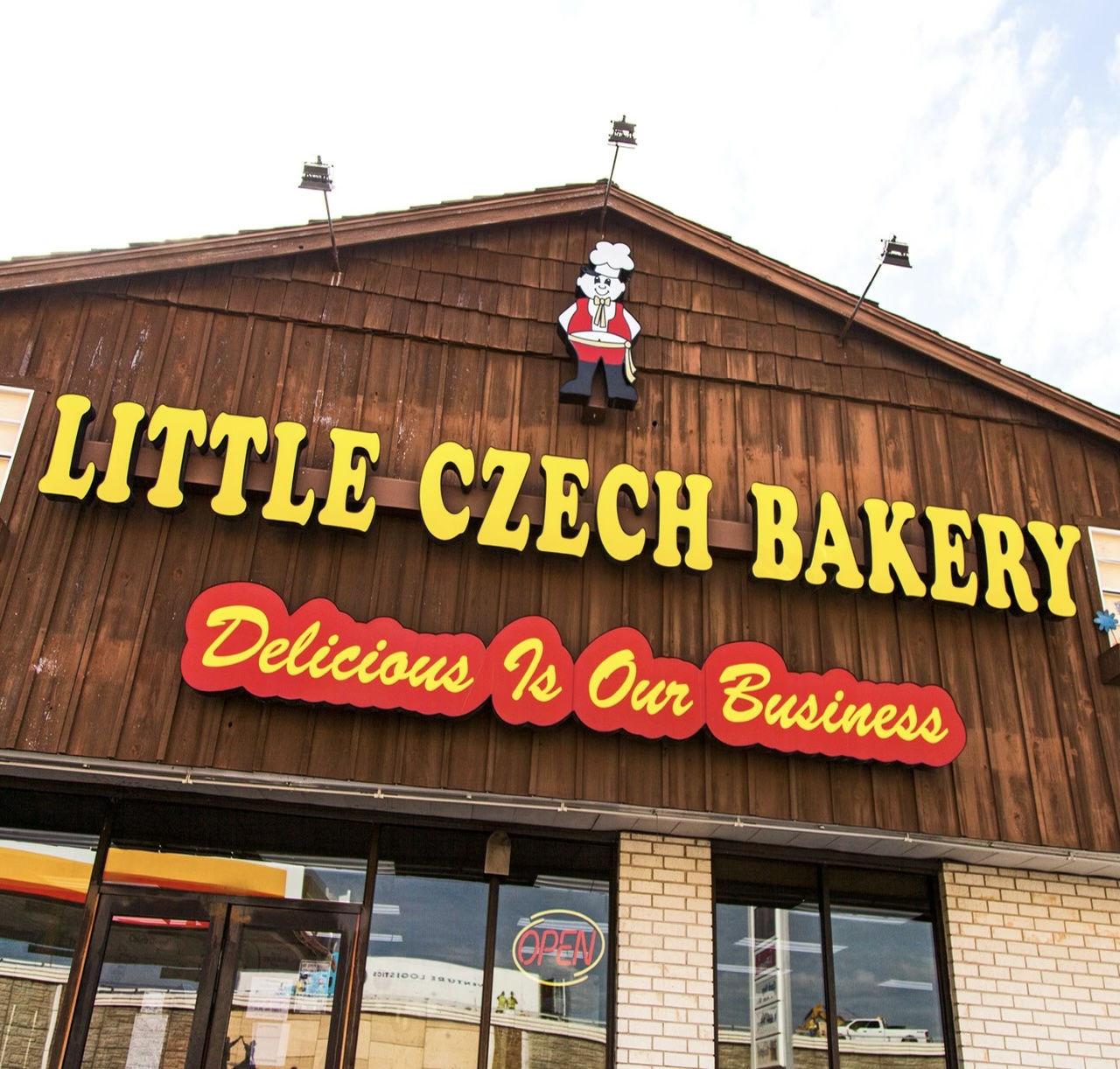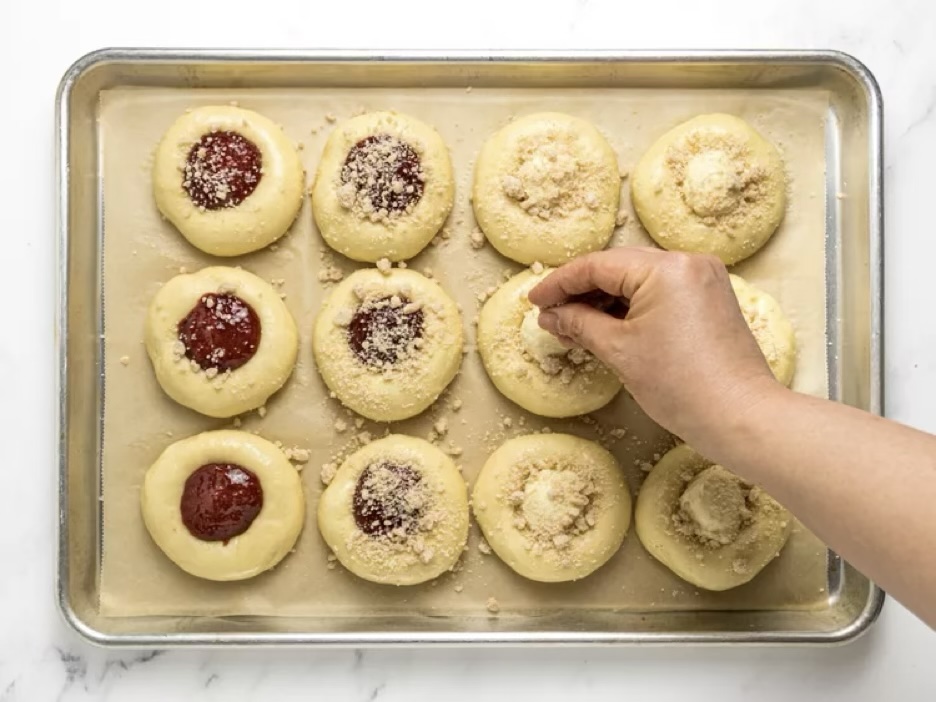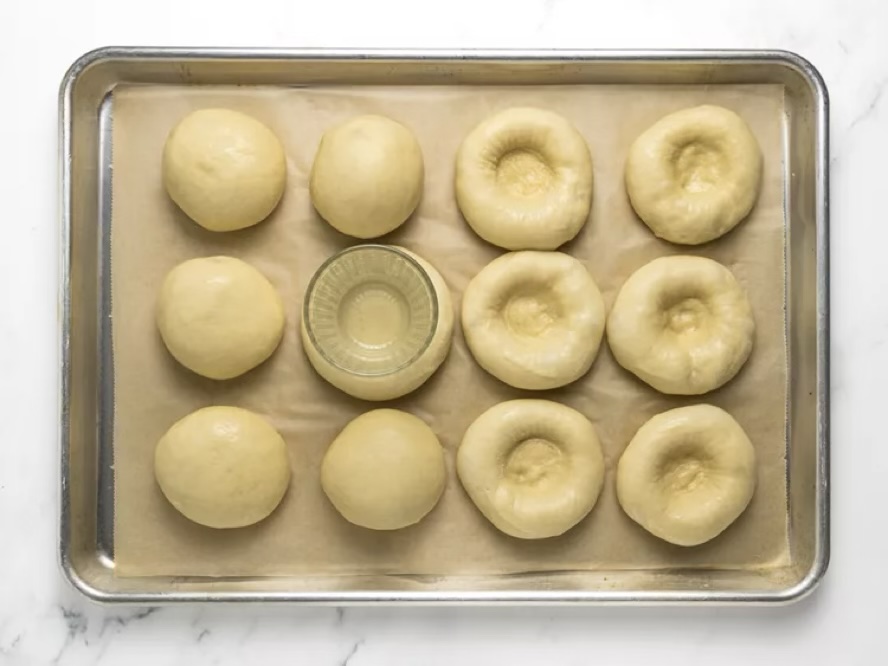Czech Kolaches: A Texas-Favorite!
Here’s some fun facts to know and tell at the dinner table. I just read on www.seriouseats.com that in the mid-1800s Czech immigrants started settling in Texas. It was the abundance of good, relatively inexpensive farmland that brought them there. By the early 1900s Czech bakeries were popping up throughout the state.

And with the Czech bakery came the Czech tradition of kolaches. It wasn’t long before all of Texas discovered and fell in love with this drool-worthy pastry. It soon became a staple breakfast and snack for locals and tourists alike.
And still today they’re everywhere up and down Highway 35, the artery that runs through the state from top to bottom. (I’d love it if any of you from Texas would chime in on this; are they as popular as Serious Eats says they are? And have you had them?)
These pillowy soft pastries are typically heaped with fruit jam, sweetened cream cheese, or almond and poppy seed filling. Creative bakers have even come up with savory versions. It’s such a versatile dough that it does well with creative experimenting. You’re limited only by your imagination.

So let’s talk about this dough. While kolaches are considered pastries, they aren’t made with a classic flaky, crumbly pastry dough. Instead, kolache dough is an enriched bread dough that’s pillowy and light, but still has a distinct bread-like chew that’s sturdy enough to support a generous portion of filling. To achieve the right dough texture, the yeasted dough is enriched with milk, egg yolks, and butter.
The added fat of all three ingredients coats the flour during kneading, which limits the gluten development slightly to create a more tender dough. A lengthy kneading of the dough in the stand mixer traps air in the dough, so when proofed and baked the dough has a light, springy texture.
The resulting dough is soft and so pliable that when shaped into round buns and gently pressed down in the center, the buns hold their scooped shape, thus making the perfect “container” for the fillings to nestle into. The bottom of a greased two and a half– to three-inch diameter mug, glass jar, or measuring cup is a great tool for creating a perfectly round indentation.

Serious Eats chefs say that once the kolaches are shaped, the edges are brushed with an egg wash to enhance browning in the oven and to create an attractive sheen. A heaping tablespoon of the filling of your choice is added to the indentation in each bun.
Once filled, they get a generous sprinkle of a traditional Czech streusel topping called “posypka,” then all kolaches are fitted onto one sheet tray. Traditionally, it’s not only OK, but actually preferred that their edges touch and fuse together while baking.
Now for your baking delight, I’ll close with a recipe for traditional kolaches (provided by www.seriouseats.com) as well as a BIG “Thank you” to them for sharing this wonderful recipe. If you’ve ever made these, we’d love to hear from you. I’m making them this weekend and I’ll be sure to report back as well.
Traditional Czech Kolaches

STRAWBERRY JAM (see notes)
1 pound strawberries trimmed and halved
2 tablespoons lemon juice (from 1 lemon)
2/3 cup sugar
1/2 teaspoon kosher salt
CREAM CHEESE FILLING
8 ounces cream cheese softened
1/4 cup sugar
1 egg yolk
2 teaspoons vanilla extract
POSYPKA (streusal topping)
1/4 cup all-purpose flour
1/4 cup sugar
1/4 teaspoon cinnamon
1 1/2 tablespoons melted butter
DOUGH
1 cup warm milk
6 tablespoons melted butter
2 egg yolk
3 cups all-purpose flour
2 1/4 teaspoons instant dry yeast
1/2 cup sugar
1 teaspoon kosher salt
1 egg whisked with 1 tablespoon milk for the egg wash
Directions:
JAM: In a small saucepan add strawberries, sugar, lemon juice, and salt and cook over medium heat, stirring occasionally until berries break down, mixture thickens, spatula leaves trail that does not fill in immediately and jam is reduced to about 1 cup, about 15 minutes. Let cool off heat for 10 minutes, then transfer to a food processor and purÈe until smooth. Transfer to a small bowl or clean glass jar and refrigerate until ready to use.
CREAM CHEESE FILLING: If Making With Cream Cheese Filling: In a food processor, add cream cheese, sugar, egg yolk, and vanilla extract. Process until well combined and sugar dissolves, about 1 minute, scraping down the sides of the food processor jar as needed. Transfer to a bowl and refrigerate until ready for use.
POSYPKA (Streusel topping): In a bowl, whisk flour, sugar, and cinnamon to combine. Add butter and rub between fingers until mixture resembles wet sand. Cover and refrigerate until ready to use.
DOUGH: In a 2-cup liquid measuring cup or medium bowl, whisk together milk, melted butter, and egg yolks to combine (butter may form clumps; this is fine).
In the bowl of a stand mixer, whisk flour, sugar, yeast, and salt to combine. Fit stand mixer with dough hook, and with mixer running on low speed, slowly pour milk mixture into flour mixture, and knead on low speed until no dry flour remains, about 2 minutes. Increase speed to medium and knead until dough clears sides of bowl but still sticks to bottom, 8 to 12 minutes.
Transfer dough to a greased bowl and cover with plastic wrap. Proof at warm room temperature (70 to 74?) until dough it doubled in size, 60 to 90 minutes.
Once dough has risen, line rimmed baking sheet with parchment paper; set aside. Adjust oven rack to middle position and preheat oven to 350? (175?). Punch down dough and transfer to a lightly floured work surface. Roll dough into a 3-inch wide log, then cut and portion dough into twelve 2-ounce pieces.
Form each dough piece into a rough ball by pinching and pulling dough edges under so that top is smooth. On clean counter, cup each ball with your palm and roll into smooth, tight ball.
Arrange dough balls on prepared parchment-lined baking sheet, spaced evenly apart in 3 rows of 4. Brush tops with remaining 1 tablespoon melted butter. Cover loosely with plastic wrap and let proof at room temperature until puffed up but not quite doubled in size, 30 to 60 minutes.
Grease the bottom of a glass jar, cup, or a measuring cup with 2 1/2- to 3-inch diameter with cooking spray or neutral oil, and make a deep indentation in center of each dough ball by slowly pressing cup into the dough on sheet. The indentations should be deep enough to fit about 1 tablespoon of filling.
Brush prepared egg wash evenly over the dough. Divide your choice of either the strawberry or cheese filling evenly among kolaches (about 1 heaping tablespoon per kolache) and smooth with back of spoon. Sprinkle streusel topping evenly over kolaches.
Bake until golden brown, about 30 minutes, rotating sheet halfway through baking. The kolaches' edges will touch and fuse together when baking. Let buns cool on pan for at least 30 minutes, then carefully pull apart. Serve warm or at room temperature.
NOTES:
This recipe can be easily doubled and baked in batches.
The two most common kolache fillings are fruit jam and cheese. This recipe includes both filling options, with each filling recipe written to make enough for a full batch. If youíd like to make both, halve each filling recipe to prepare 6 of each or double the dough to make a full batch of each.
Store-bought fruit jam of your choice may be substituted for freshly made, but you may need to reduce it further in order to get a thick enough consistency that the jam doesn't run out of the kolaches while baking.
The fillings can be made and refrigerated for up to 4 days before using. The baked kolaches can be stored in an airtight container at room temperature for up to 3 days.
CREAM CHEESE FILLING: If Making With Cream Cheese Filling: In a food processor, add cream cheese, sugar, egg yolk, and vanilla extract. Process until well combined and sugar dissolves, about 1 minute, scraping down the sides of the food processor jar as needed. Transfer to a bowl and refrigerate until ready for use.
POSYPKA (Streusel topping): In a bowl, whisk flour, sugar, and cinnamon to combine. Add butter and rub between fingers until mixture resembles wet sand. Cover and refrigerate until ready to use.
DOUGH: In a 2-cup liquid measuring cup or medium bowl, whisk together milk, melted butter, and egg yolks to combine (butter may form clumps; this is fine).
In the bowl of a stand mixer, whisk flour, sugar, yeast, and salt to combine. Fit stand mixer with dough hook, and with mixer running on low speed, slowly pour milk mixture into flour mixture, and knead on low speed until no dry flour remains, about 2 minutes. Increase speed to medium and knead until dough clears sides of bowl but still sticks to bottom, 8 to 12 minutes.
Transfer dough to a greased bowl and cover with plastic wrap. Proof at warm room temperature (70 to 74?) until dough it doubled in size, 60 to 90 minutes.
Once dough has risen, line rimmed baking sheet with parchment paper; set aside. Adjust oven rack to middle position and preheat oven to 350? (175?). Punch down dough and transfer to a lightly floured work surface. Roll dough into a 3-inch wide log, then cut and portion dough into twelve 2-ounce pieces.
Form each dough piece into a rough ball by pinching and pulling dough edges under so that top is smooth. On clean counter, cup each ball with your palm and roll into smooth, tight ball.
Arrange dough balls on prepared parchment-lined baking sheet, spaced evenly apart in 3 rows of 4. Brush tops with remaining 1 tablespoon melted butter. Cover loosely with plastic wrap and let proof at room temperature until puffed up but not quite doubled in size, 30 to 60 minutes.
Grease the bottom of a glass jar, cup, or a measuring cup with 2 1/2- to 3-inch diameter with cooking spray or neutral oil, and make a deep indentation in center of each dough ball by slowly pressing cup into the dough on sheet. The indentations should be deep enough to fit about 1 tablespoon of filling.
Brush prepared egg wash evenly over the dough. Divide your choice of either the strawberry or cheese filling evenly among kolaches (about 1 heaping tablespoon per kolache) and smooth with back of spoon. Sprinkle streusel topping evenly over kolaches.
Bake until golden brown, about 30 minutes, rotating sheet halfway through baking. The kolaches' edges will touch and fuse together when baking. Let buns cool on pan for at least 30 minutes, then carefully pull apart. Serve warm or at room temperature.
NOTES:
This recipe can be easily doubled and baked in batches.
The two most common kolache fillings are fruit jam and cheese. This recipe includes both filling options, with each filling recipe written to make enough for a full batch. If youíd like to make both, halve each filling recipe to prepare 6 of each or double the dough to make a full batch of each.
Store-bought fruit jam of your choice may be substituted for freshly made, but you may need to reduce it further in order to get a thick enough consistency that the jam doesn't run out of the kolaches while baking.
The fillings can be made and refrigerated for up to 4 days before using. The baked kolaches can be stored in an airtight container at room temperature for up to 3 days.
Recipe formatted with the Cook'n Recipe Software from DVO Enterprises.
 Alice Osborne
Alice Osborne
Weekly Newsletter Contributor since 2006
Email the author! alice@dvo.com
